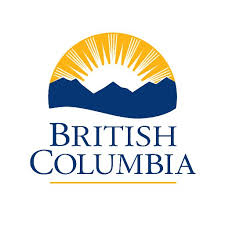biology
Type of resources
Available actions
Topics
Keywords
Contact for the resource
Provided by
Formats
Representation types
Update frequencies
status
-

Amalgamations of Wildlife Management Units which share similar ecological characteristics and hunter harvest patterns, and thus provide a suitable geographical framework for implementing population management strategies
-

Distribution of Marbeled Murrelet habitat in coastal British Columbia showing relative abundance (RA) by season and overall relative importance (RI). RI is based on project region and not on the province as a whole. CRIMS is a legacy dataset of BC coastal resource data that was acquired in a systematic and synoptic manner from 1979 and was intermittently updated throughout the years. Resource information was collected in nine study areas using a peer-reviewed provincial Resource Information Standards Committee consisting of DFO Fishery Officers, First Nations, and other subject matter experts. There are currently no plans to update this legacy data.
-

Coastline segments indicating herring spawing sites along the coastline of British Columbia. Attribute information includes relative importance, spawing frequency and spawn index. CRIMS is a legacy dataset of BC coastal resource data that was acquired in a systematic and synoptic manner from 1979 and was intermittently updated throughout the years. Resource information was collected in nine study areas using a peer-reviewed provincial Resource Information Standards Committee consisting of DFO Fishery Officers, First Nations, and other subject matter experts. There are currently no plans to update this legacy data.
-

Distribution of eelgrasses in coastal British Columbia showing relative abundance (RA) and overall relative importance (RI). RI is based on project region and not on the province as a whole. CRIMS is a legacy dataset of BC coastal resource data that was acquired in a systematic and synoptic manner from 1979 and was intermittently updated throughout the years. Resource information was collected in nine study areas using a peer-reviewed provincial Resource Information Standards Committee consisting of DFO Fishery Officers, First Nations, and other subject matter experts. There are currently no plans to update this legacy data.
-

Distribution of Great Blue Heron habitat in coastal British Columbia showing relative abundance (RA) by season and overall relative importance (RI). RI is based on project region and not on the province as a whole. CRIMS is a legacy dataset of BC coastal resource data that was acquired in a systematic and synoptic manner from 1979 and was intermittently updated throughout the years. Resource information was collected in nine study areas using a peer-reviewed provincial Resource Information Standards Committee consisting of DFO Fishery Officers, First Nations, and other subject matter experts. There are currently no plans to update this legacy data.
-

Distribution of Black Oystercatcher habitat in coastal British Columbia showing relative abundance (RA) by season and overall relative importance (RI). RI is based on project region and not on the province as a whole. CRIMS is a legacy dataset of BC coastal resource data that was acquired in a systematic and synoptic manner from 1979 and was intermittently updated throughout the years. Resource information was collected in nine study areas using a peer-reviewed provincial Resource Information Standards Committee consisting of DFO Fishery Officers, First Nations, and other subject matter experts. There are currently no plans to update this legacy data.
-

Land Features entities are: Island, Shoreline, Wooded Area, Saturated soil, Landform Feature (esker, sand\...), and Cut Line. CanVec is a digital cartographic reference product of Natural Resources Canada (NRCan). It originates from the best available data sources covering Canadian territory, offers quality topographical information in vector format, and complies with international geomatics standards. CanVec is a multi-source product coming mainly from the National Topographic Data Base (NTDB), the Mapping the North process conducted by the Canada Center for Mapping and Earth Observation (CCMEO), the Atlas of Canada data, the GeoBase initiative, and the data update using satellite imagery coverage (e.g. Landsat 7, Spot, Radarsat, etc.). Distributed from [GeoYukon](https://yukon.ca/geoyukon) by the [Government of Yukon](https://yukon.ca/maps) . Discover more digital map data and interactive maps from Yukon's digital map data collection. For more information: [geomatics.help@yukon.ca](mailto:geomatics.help@yukon.ca)
-

Fish holding areas (i.e. areas of concentration of salmon and herring, both adult and juvenile) in coastal British Columbia. Attribute information includes overall relative importance, species of salmon and other fish observed at various times throughout the year as well as information on spawning activity and larvae. CRIMS is a legacy dataset of BC coastal resource data that was acquired in a systematic and synoptic manner from 1979 and was intermittently updated throughout the years. Resource information was collected in nine study areas using a peer-reviewed provincial Resource Information Standards Committee consisting of DFO Fishery Officers, First Nations, and other subject matter experts. There are currently no plans to update this legacy data.
-

Distribution of Alcid habitat in coastal British Columbia showing relative abundance (RA) by season and overall relative importance (RI). RI is based on project region and not on the province as a whole. CRIMS is a legacy dataset of BC coastal resource data that was acquired in a systematic and synoptic manner from 1979 and was intermittently updated throughout the years. Resource information was collected in nine study areas using a peer-reviewed provincial Resource Information Standards Committee consisting of DFO Fishery Officers, First Nations, and other subject matter experts. There are currently no plans to update this legacy data.
-

This feature delineates forest and vegetation stands in the Yukon at a scale of 1: 40 ,000. It is a management level forest inventory (as opposed to a n operational level) - meaning that analysis and mapping are most effective close to the 1:40,000 scale and not larger . This inventory has been completed in various stages : delineation from hardcopy black and white photographs took place from 1987 to 2002; while recent data collection has proceeded through a digital (aka 'softcopy') methodology of scanned photographs and digital elevation models. Distributed from [GeoYukon](https://yukon.ca/geoyukon) by the [Government of Yukon](https://yukon.ca/maps) . Discover more digital map data and interactive maps from Yukon's digital map data collection. For more information: [geomatics.help@yukon.ca](mailto:geomatics.help@yukon.ca)
 Arctic SDI catalogue
Arctic SDI catalogue